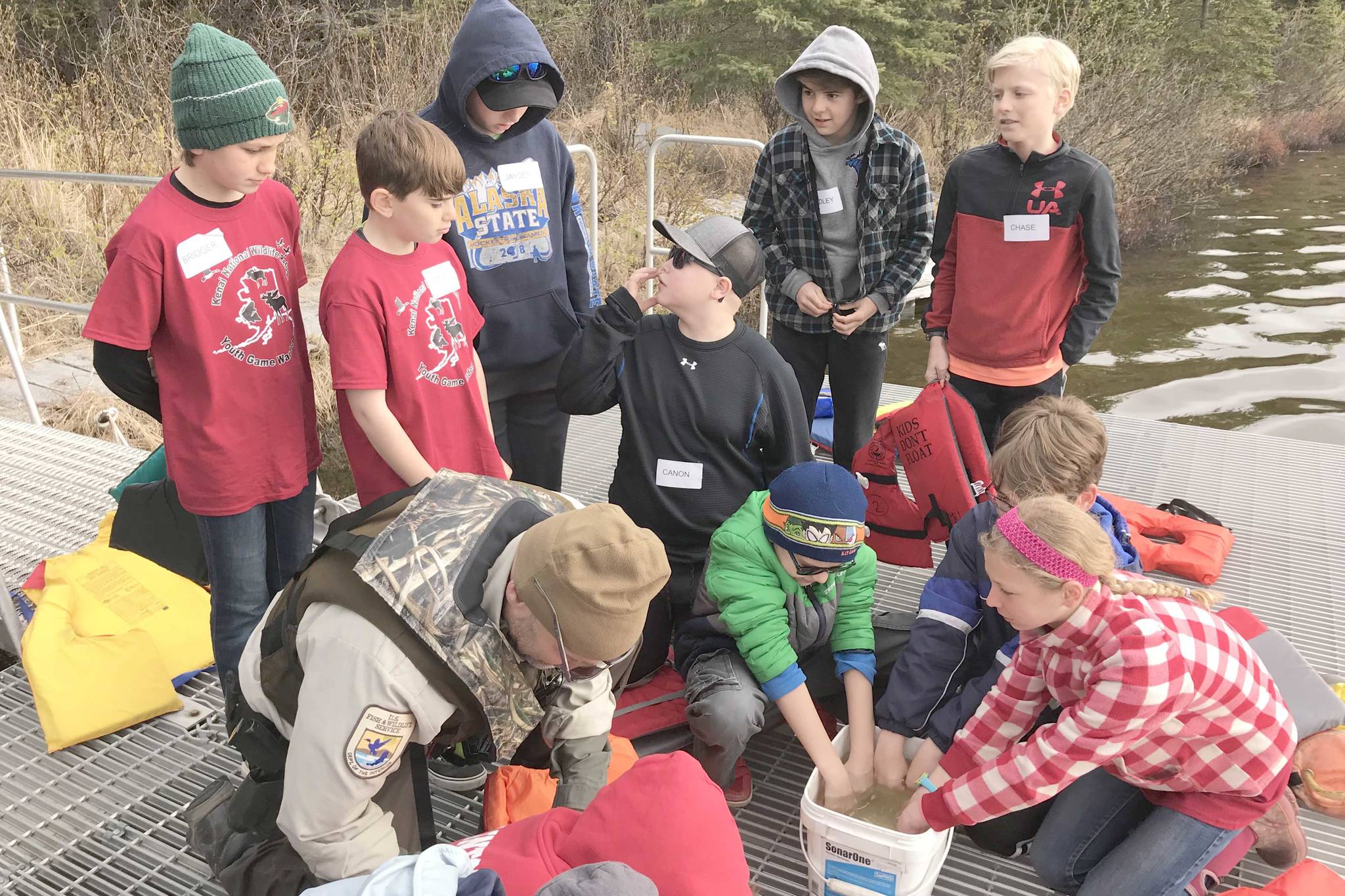2019 marks the fifth year the Kenai National Wildlife Refuge has hosted a Game Warden Camp for local youth. This camp offers youth the chance to learn more about Alaska’s natural resources and meet those responsible for protecting them.
All told, over 215 kids have passed through the camp, ranging from grades four through seven and, on occasion, an upper middle school or even a few high school students.
A goal of this camp is to give kids a meaningful experience that might spark career interests in fisheries and wildlife biology, conservation or perhaps an aviation career flying as a pilot-biologist or game warden. The camp intertwines the knowledge and experience of wildlife officers from several resource agencies, federal and state wildlife managers, and Kenai refuge staff, who share their enthusiasm for the job with these budding conservationists.
Asked what they enjoyed most about the camp, kids responded with, “Everything!,” “archery,” “GPS,” “figuring out what happened with the animals and looking for evidence,” “drones” and “boating safety.”
One of the activities this year was a mock wildlife forensics crime scene where junior game wardens looked for clues to help solve a wildlife crime. They also got a little hands on with antlers, skulls, skins and duck identification so they could learn about what makes a moose or sheep legal to harvest, the difference between dabbling and diving ducks, the importance of the Pacific Flyway for migratory birds, and the comeback story of the emperor goose in Alaska through collaborative management efforts.
And you cannot go wrong with a little hands-on technology. The kids learned about interactive GPS, even while learning to appreciate a good old-fashioned compass. They navigated their way to a reported “possibly illegal bear bait station,” and then on to a “smoke report” where they discussed campfire safety.
A new activity this year was an introduction to the innovative use of drones in wildlife management and conservation. They learned how biologists use drones to monitor nesting bird colonies such as the Aleutian tern colony on Headquarters Lake. While the kids did not fly the drones themselves, as it would involve several licenses, certifications and training classes, they learned about and could appreciate the application this cool tool offers.
As always, archery was a big hit. This year kids got to take aim at the invasive zombie and learn about some of the invasive species here on the Kenai Peninsula such as pike, elodea and a more recently discovered threat, earthworm. All of these non-native species cause or have the potential to cause environmental or economic harm.
During the boating safety activity, the “ice bucket” challenge tested their mental and physical mettle. Their daunting goal was to pick up as many coins as they could in a bucket of ice water and then quickly don a life jacket to demonstrate the crippling effects of hypothermia on fine motor skills. Challenging each other in teams, they just loved this game! And the game helped showcase the advantages of different life jackets.
A few years back, we deputized the kids as junior game wardens for a day. They then walked through mini real-life scenarios in which we paired up a small group of kids with a game warden so they could learn what it is like to make contact with a member of the public. It gave the kids a feel for some of our everyday experiences with visitors to public lands.
I have enjoyed the outreach opportunity that putting together the Game Warden Camps has given me, and the enthusiasm the next generation carries. Tons of cool stuff, most of it hands on, and lots of fun mixed in even as our kids start down the path of becoming thoughtful stewards of their natural resources.
Our partners for this awesome event included Friends of the Kenai Refuge, Alaska Department of Fish & Game, Alaska State Parks, Alaska Wildlife Troopers and the National Park Service. See you out there!
Kelly Modla is a Federal Wildlife Officer at the Kenai National Wildlife Refuge. Find more Refuge Notebook articles (1999-present) at https://www.fws.gov/Refuge/Kenai/community/Refuge_notebook.html.

